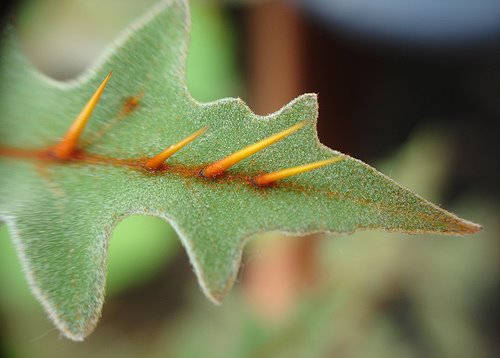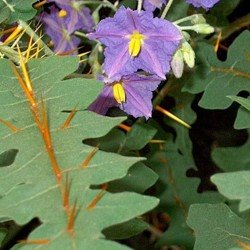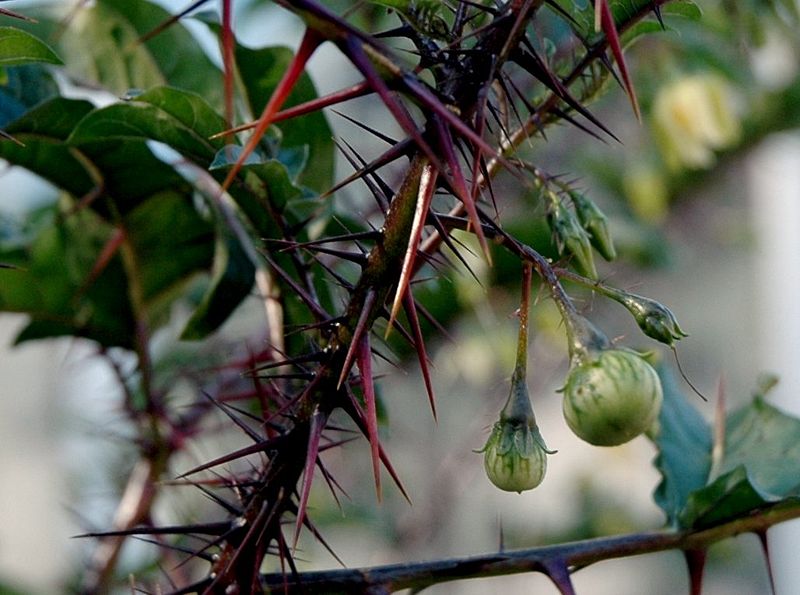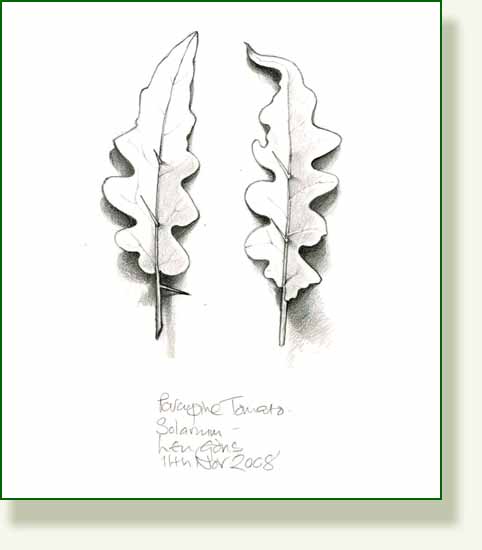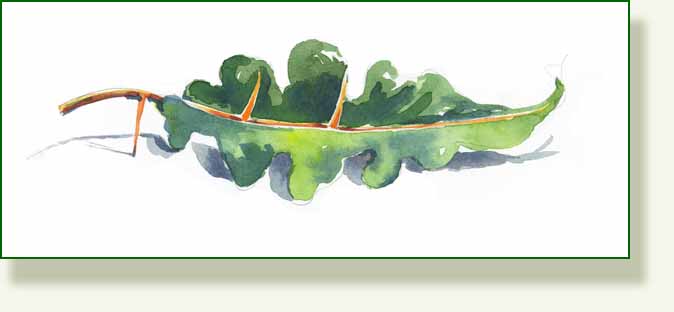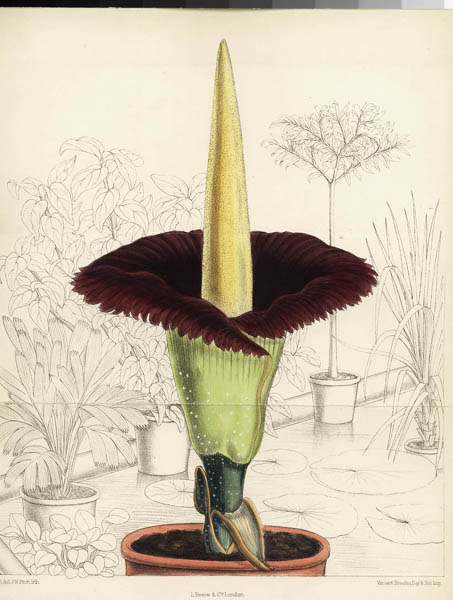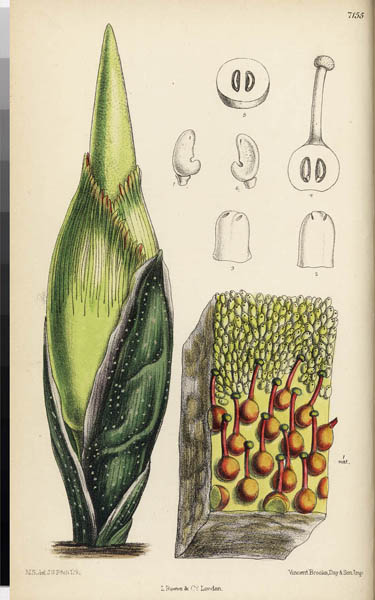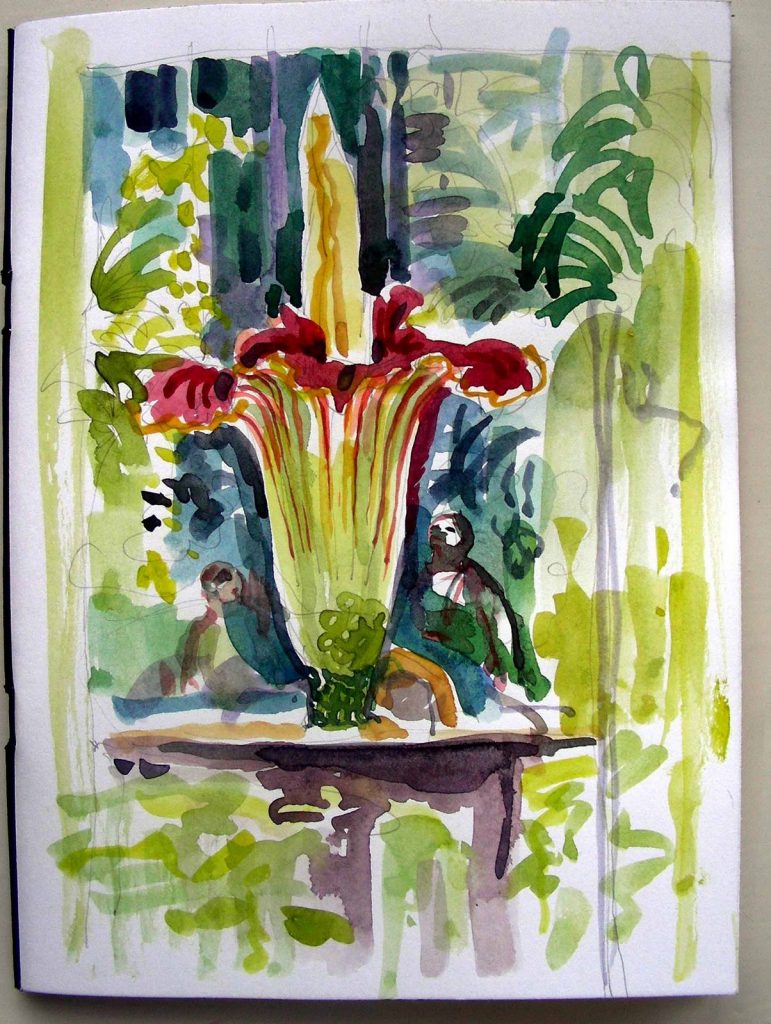As I walked past this little plant yesterday I had a feeling I had seen it somewhere before and today realised it was a few days ago on “Outofdoors” blog, mentioned in the post “C’mon now Touch me, babe” about the importance of considering the texture of plants for the landscape, here . It is strange how things creep into your subconscious and then suddenly there they are in front of you.
I noticed some time ago how few visitors to garden I see touching the plants. Is this because we are taught not to touch when we are children or have we become so separated from nature that we regard it as alien.. well I suppose it is sometimes. It is a shame though, because experiencing the feel of plants is one of the very great joys of gardening. I can’t resist it and am constantly surprised because things do not always feel as you expect them to!
But this little plant is not doing too well at the garden and so I only brought 2 very small leaves back to draw which by no means do it justice. This is the Solanum pyracanthum, a plant from Madagascar and a member of the huge and diverse solanum family. What makes this so attractive is the beautiful red orange stems, and the bright orange and ferocious thorns which track the leaf veins on both the top and bottom surface of the leaves.
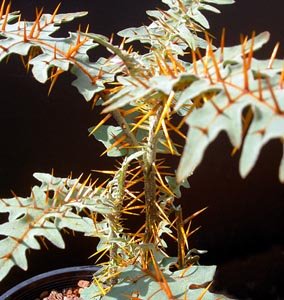
image from cactusjungle.com here
The leaves themselves are a really beautiful blue-green and soft, apart from the spines of course. The pretty, typical solanum flowers are a lavender blue. It gets quite an enthusiastic press except from one grower who finds it self-seeds a bit too readily and each seedling arrives with fully formed skin piercing thorns.
There are over 1400 species in this solanum genus and they share some uncomfortable characteristics, all being toxic to some degree, and hairy or prickly. They all have the five lobed flowers and their fruits are berries. They range from some of the poisonous nightshades to the tomato, eggplant and the potato. There are some spectacular varieties with some wonderfully descriptive names to accompany them too, Cockroach berry, Apple of Sodom, Devil’s tomato, Nipple fruit, Bluewitch nightshade, Hairy Fruited eggplant, Buffalo burr and many others.
Here for example is the the Five Minute Plant ( why?) Solanum atropurpureum with its wonderful dark purple thorny stems and green and white striped berries, looking like the little Thai eggplants I have seen at the farmer’s market.
and Solanum quitoense the “naranjilla” from Quito in Ecuador,
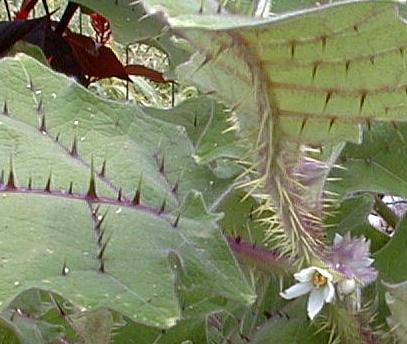
Image from Tom Clothiers very interesting general gardening site here
..which has these beautiful orange fruit.
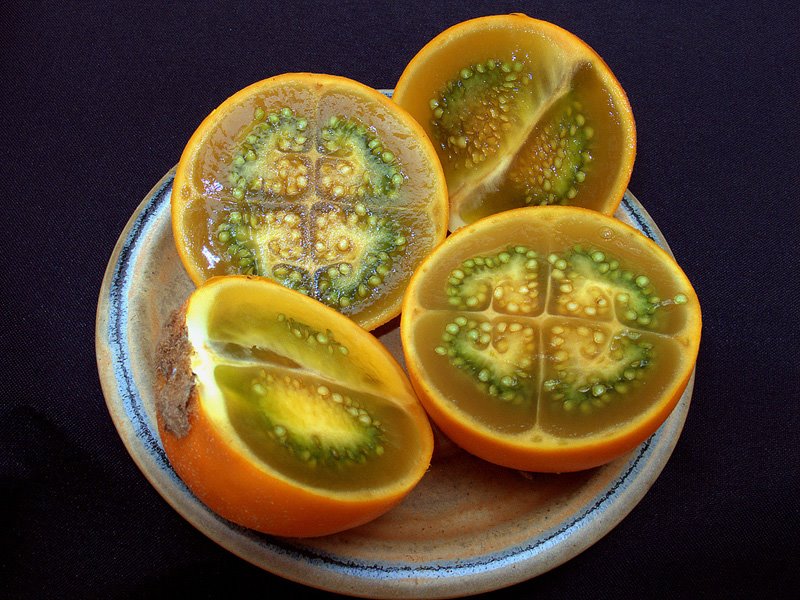
Great photo from Botany Photo of the Day which always has something stunning to look at. here
I rather liked this robust illustration of the Porcupine Tomato from Curtis’ Botanical Magazine 1894. It has a brief and factual description and says that the plant arrived at its new chilly home in Kew Gardens via Paris in 1789, sent over by Andre Thouin, where ” it is cultivated with us in the stove , where it sometimes produces ripe seeds“. Mr Thouin was the head gardener at the Jardin du Roi in Paris and the “stove” would possibly be Kew’s Great Stove hot house built in 1792.
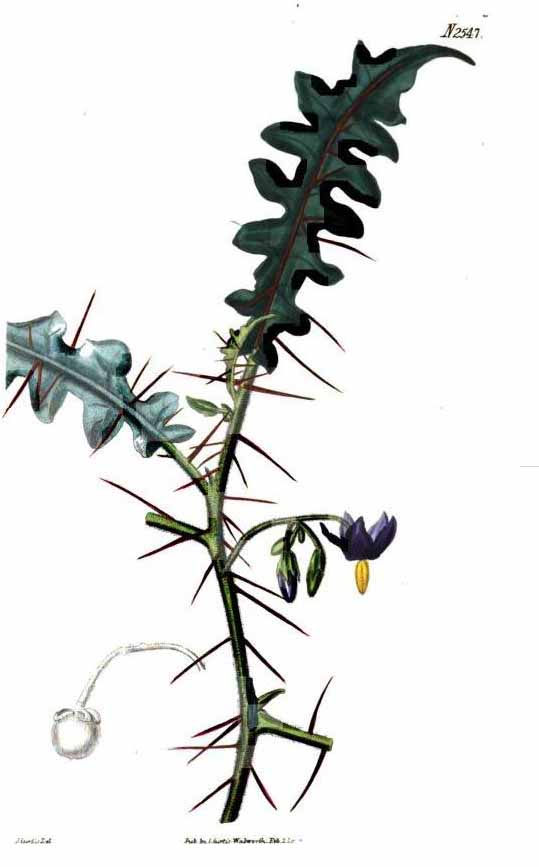
The text also explains that some of these plants are more thorny than others and parts of this specimin are “unarmed”. Not much though I think.. They are a thoroughly fascinating group of plants and I have spent far too long reading about them, the stove houses and the interesting ailments I can apparently cure with nightshade…more spells for the book!
________________________________

